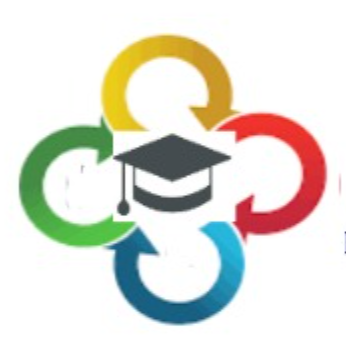Education for Sustainable Development
(ESD) has emerged as a cornerstone for preparing individuals and institutions
to respond to pressing global challenges such as climate change, inequality,
and the depletion of natural resources. More than an academic exercise, ESD
calls for a transformation in how learning is structured, practiced, and
applied across all dimensions of education. It integrates knowledge with
values, critical thinking with ethical responsibility, and innovation with
social impact. To capture this holistic vision, the 8C Framework—comprising
Curriculum, Campus, Community, Culture, Creativity & Critical Inquiry,
Coherence, Collaboration, and Connectivity—offers a comprehensive approach.
Together, these interconnected pillars ensure that sustainability becomes
embedded not only in what students learn, but also in how institutions operate,
engage with society, and contribute to global goals such as the SDGs and Qatar
National Vision 2030.
- Integration
across disciplines: Sustainability principles should be infused into all
fields—business, engineering, health, social sciences—so learners see
sustainability as a cross-cutting issue.
- Pedagogy
for sustainability: Active learning, problem-based projects, and
experiential methods encourage students to critically examine
sustainability challenges and co-develop solutions.
- Competency
development:
The curriculum should cultivate systems thinking, critical reflection,
ethical reasoning, and future-oriented decision-making.
- Assessment
alignment:
Learning outcomes and assessment tools must reflect sustainability
competencies, not only technical knowledge.
2. Campus: Living
Laboratory for Sustainability
- Green
operations:
Energy efficiency, water conservation, waste reduction, and carbon
footprint tracking should be embedded in campus operations.
- Sustainable
infrastructure:
Buildings and facilities can model sustainable design, renewable energy,
and circular economy practices.
- Student
engagement in campus sustainability: Students should be involved in
monitoring and improving campus sustainability metrics, turning the campus
into a “living lab.”
- Digital
transformation:
Smart technologies can optimize resources and provide real-time learning
opportunities through data dashboards.
3. Community:
Extending Impact Beyond the Institution
- Local
partnerships:
Collaboration with schools, NGOs, businesses, and municipalities
strengthens the transfer of sustainability practices beyond academia.
- Service-learning: Students apply
sustainability knowledge in real-world community projects—such as clean
energy initiatives, social enterprises, or public health campaigns.
- Knowledge
dissemination:
Public workshops, open lectures, and digital platforms democratize access
to sustainability knowledge.
- Global
engagement:
Partnerships with international institutions promote intercultural
learning and alignment with global agendas (e.g., SDGs).
4. Culture: Building
Values and Lived Practices
- Institutional
ethos:
Sustainability should be embedded into the university’s mission, values,
and daily practices.
- Leadership
commitment:
Senior leaders must champion sustainability and model it in their
decision-making.
- Inclusivity
and diversity:
A culture of equity, respect, and participation ensures that
sustainability is understood as both an environmental and a social goal.
- Celebration
of sustainability achievements: Recognizing student and staff
contributions reinforces collective ownership of sustainability goals.
5. Creativity &
Critical Inquiry (Research and Innovation)
- Interdisciplinary
research:
Addressing sustainability challenges requires collaboration across
scientific, social, and policy domains.
- Applied
solutions:
Universities should pilot innovations—such as renewable energy
technologies or circular business models—that can be scaled to society.
- Student
research opportunities: Embedding ESD in undergraduate
and postgraduate research fosters early innovation in sustainability.
6. Coherence
(Governance and Policy Alignment)
- Institutional
policies:
Embedding sustainability in procurement, budgeting, and HR ensures ESD is
systemic, not peripheral.
- Accountability: Regular
sustainability reporting increases transparency and drives continuous
improvement.
- Policy
coherence:
Alignment with national sustainability strategies (e.g., Qatar National
Vision 2030) ensures relevance and impact.
7. Collaboration (Partnerships
and Networks)
- Cross-sector
collaboration:
Engaging with government, industry, and civil society creates pathways for
knowledge transfer and innovation.
- Regional
and global networks: Membership in sustainability consortia (e.g., UNESCO’s
Global Action Programme, SDSN) enhances learning and benchmarking.
- Industry
linkages:
Joint projects with businesses can accelerate sustainable innovation and
employability of graduates.
8. Connectivity
(Digital Transformation for ESD)
- E-learning
platforms:
Digital tools broaden access to sustainability education, particularly for
lifelong learners.
- Data-driven
insights:
Analytics and AI can optimize sustainability practices and support
evidence-based decision-making.
- Digital
literacy:
Preparing students to responsibly use technology in addressing
sustainability challenges is now essential.
Conclusion
The 8C Framework underscores that
advancing Education for Sustainable Development requires coherence between
teaching, research, governance, partnerships, and digital transformation. By
aligning Curriculum, Campus, Community, and Culture with enabling pillars of
Creativity, Coherence, Collaboration, and Connectivity, institutions can foster
systemic change rather than isolated initiatives. This holistic model equips
learners with the competencies to navigate complexity, inspires innovation in
addressing sustainability challenges, and positions universities as leaders in
shaping a just, resilient, and sustainable future. Ultimately, the framework
reinforces education’s transformative role as both a driver and enabler of
sustainable development worldwide.
